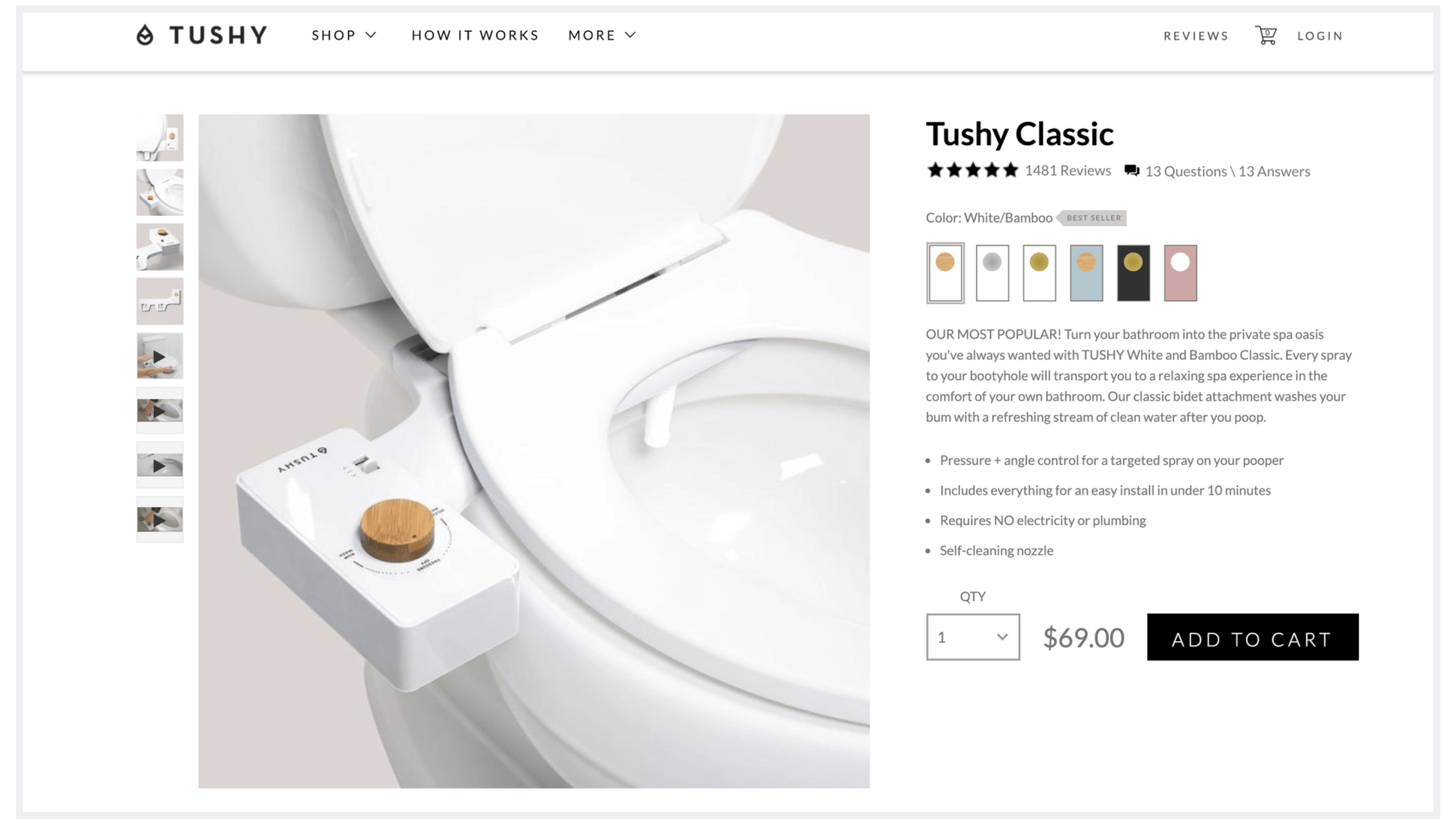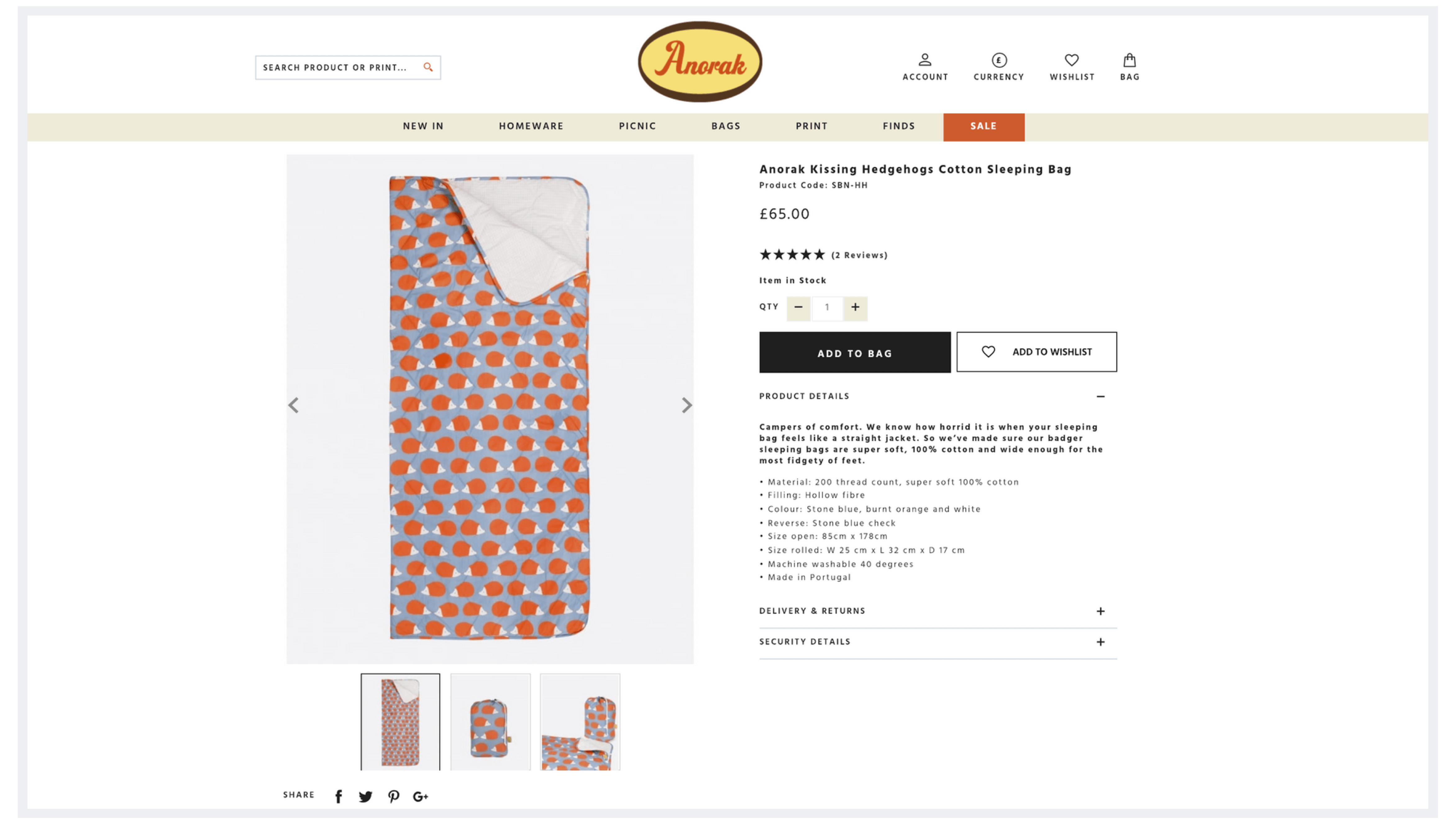
How to write ecommerce product descriptions: A complete guide
Strategic, branded product descriptions can be the difference between an abandoned cart and a conversion. While you might save time by pasting generic descriptions into your product pages, taking the path of least resistance can really limit your bottom line.
It’s true that product descriptions take time to write—and even more time to write well—but they're a critical part of merchandising your products. Being able to write clear, compelling product descriptions is a huge part of running a successful online store.
In this post, we'll take you step-by-step through the process of writing successful product descriptions. We’ll show you why they're important, how to go about crafting them, and some examples of great product descriptions in the wild.
What are product descriptions?
As the name suggests, product descriptions are the words you use to describe your products. In ecommerce, specifically, they're the blurbs of text on product pages that tell customers about your product. A good product description describes your product's features and benefits, acknowledges the problem it solves, and declares why it's the best product for the job.
Okay, but do I need them?
Yes, you do. And more importantly, your customers need them.
A product listed without a description will sell at a much lesser rate than a product with one. Imagine trying to sell a waterproof jacket without saying it’s waterproof, or trying to sell a pair of eco-friendly shoes without saying they’re made of recycled materials. Good luck.
Brick-and-mortar shops have employees available to provide customers with basic product information. Plus, as a shopper, you can physically interact with a product and get more information before you decide to buy it.
Online, it’s very different. In online stores, product descriptions try to replace the experience of browsing and interacting with in-store products. When done well, they take away the guesswork and ensure customers aren't left wondering what a product is really like.
Why are product descriptions important?
It’s safe to say that any successful online store displays photos of its products. It’s also safe to say that most shoppers are drawn to products because of said photos.
So why do you need product descriptions when your product photography looks so good? Because those little descriptions fill in the holes that photos can't. They help customers make better decisions about whether a product is right for them.
In the long run, good product descriptions will save you time. If they answer potential questions, customers won’t need to email you and ask. Plus, there’s a lesser chance they’ll get annoyed by a lack of information and abandon their cart.
Strategically written product descriptions have the added benefit of boosting your SEO. That means more people are going to be able to find your products and become customers.
How do I write one (or 50) of these things?
Writing an entire store's worth of product descriptions can be a daunting task. To help make things easier, we’ve broken it down into the following steps.
Figure out your target demographic
Start by asking yourself: who is going to buy this product? Once you have an idea of who your target customer is, you can craft your product description to fit that person’s lifestyle, interests, and needs. If you're selling baby toys, you'll want your descriptions to appeal to new parents rather than childless university students. Determining customer profiles can also help with marketing, product development, and store design.
Gather basic information
What are the basic pieces of information you want to convey in your product description? If you’re selling clothes, you may want to include any pertinent information on materials, manufacturing process, place of origin, etc. Does a garment fit small? Does it use natural dyes? Product descriptions should cover any basic information that can't be answered by photos.
Consider FAQs
What are your customers' most frequently asked questions?- Can this go in the dishwasher?
- What will happen if I forget this in the trunk of my car for a month?
- Is this a good present for my mom?
- Was this sustainably made?
Making a list of your frequently asked questions and including answers in your descriptions will make life easier for you and your customers. With proper product descriptions, you can expect customer support inquiries to decrease. Get in the habit of combing through your FAQs and see if there’s any information that you can add to your product descriptions as time goes on.
Choose a format
There are a lot of different ways to format product descriptions. Whichever format you choose, it's important to find a way to include both product benefits and details in your description.
If possible, you should also try to make your product descriptions scannable to allow for a quick read. Most shoppers don't want to get bogged down in large paragraphs of text. Of course there are always exceptions—only you know what's best for your customers.
One of the most popular formats goes as follows:
First, write a short paragraph. This conveys the product’s benefits to the customer. If you use a product description like this, you can have a bit of fun incorporating your voice, branding, and a scenario to help the customer imagine using your product. This section shows the customer why your product is the best for them.
- Then there are some bulleted points.
- These points include additional product details.
- Material, size, or answers to FAQs are details you'll want to include.
- Make these bullet points the most important information because bullet points are the most scannable part of your product description.
Some product descriptions don’t include a bulleted list, instead communicating that information in sentence form. This isn't as scannable—but perhaps your target demographic is a little more prosaic? For example, a lot of online bookstores include the book’s synopsis as the description in a longer paragraph.
On the other hand, there are a lot of product descriptions that only contain bulleted points, and some don’t even have any description at all (we certainly do not condone this). You’ll find a lot of these on Amazon.
Our friends at Paper Birch (who use our Grid Shopify theme—pictured below) use the aforementioned combination of a short paragraph followed by a bulleted list for their product descriptions. All of their products are very clean and simple, so they’ve created product descriptions to match. The short paragraph leads with how the art is made, and the accompanying bulleted list includes information on materials, origin, and shipping.

Establish your tone/voice
Establishing a tone essentially means speaking to your intended customer while using your brand’s voice. Try to put yourself in your customers’ shoes. What kind of communication style is going to put them at ease and make them feel most comfortable with your products?
TUSHY sells attachable bidets. They understand that not everyone is open to “bathroom talk,” so they ease any potential discomfort by having fun with descriptions throughout their entire store.

TUSHY's voice is fun and approachable. It fits their brand and could appeal to a wide variety of potential shoppers. Thanks to their unique voice, TUSHY has successfully made their product descriptions playful and informative. They’ve turned something that might make people uncomfortable into something fun. (And they’ve done it using our Handy Shopify theme.)
Think about what makes your business and products fun or unique. Descriptions are an opportunity to show off your brand’s personality and create an enjoyable shopping experience. The last thing you want is for your product descriptions to sound like they were produced by a product description generator.
Keep your language accessible and cohesive
While your product descriptions may be intended for a specific audience, you still want to ensure anyone who visits your store can understand the product. Everything should flow in a logical order. If it doesn’t make sense to you, the expert, your customers definitely won’t know what you’re talking about.
Don't forget SEO
SEO stands for Search Engine Optimization, and it’s something you’ll want to keep in mind. Strategically written product descriptions include keywords that make it easier for search engines to find your products.
As a rule, always write the product description first. After it’s written, see if you can naturally work in some keywords. No one likes to read through a description so bogged down with keywords it’s on the verge of complete nonsense.
If you need some keyword ideas, there are a lot of tools online to help you out. We suggest both Google Keyword Planner and Answer the Public.
It’s time to get writing!
Now that you know what should be included in your product descriptions, you’re ready to put pen to paper (or perhaps fingers to keys) and get going.
Writing product descriptions will take time. You’re going to want to make sure that everything is working. Preview the text in your online store. Does it make sense for your product and your brand? Write as many drafts as it takes until you feel comfortable with your content.
Get a friend to read it
This can be super helpful if you're used to doing everything yourself. When you’re working on something for a long time, it’s easy to start filling in the blanks with your own pre-existing knowledge.
By asking a friend or someone who's unfamiliar with your products to read your product descriptions, you can identify gaps you would have otherwise missed. Take their suggestions and adapt your descriptions accordingly.
Edit, proofread, and post
Once you're happy with your product descriptions, give them a final proofread (don't skip this step!) and then hit publish.
Don’t be discouraged if not every description works. Take it as an opportunity to learn what your customers want and what works best for you and your products. The great thing about having an online store is that it’s super easy to edit and improve any of your written content. Testing out different product descriptions can be more beneficial than being stubborn and sticking to one.
At the end of the day, you want to know that your product descriptions are showing the customer why your product will make their life better.
Let’s check out some examples, shall we?
Take a look at Skinnydip London. By breaking down one of their product descriptions, we can examine what they’re doing and why they’re doing it:

You'll see they're using the popular method described earlier in the post. According to Skinnydip, in addition to storing the essentials, this bag will help you stand out from the crowd. This appeals to their demographic of young women who in a world of Instagram and crop-top ubiquity just want to express themselves.
Below, they have specific details that customers might want to know. For example, people who are ethically opposed to wearing fur will probably want to be sure that their funky new bag isn’t made of real animals. Skinnydip likely anticipated being asked if the fur was real, so they made sure to include the bullet point “soft faux fur” in their details. Do you see what we’re getting at?
Next, Anorak is a homeware and lifestyle store. They sell a variety of products, but the product description for this sleeping bag is noteworthy.
Similar to Skinnydip, Anorak has a short paragraph followed by bulleted points.

They address a common customer concern in their paragraph, promoting the sleeping bag as nice and roomy. They’ve also incorporated their voice by using a little bit of humour and casual language.
Below the paragraph, in their bulleted details, they’ve noted that the sleeping bag is machine washable. This is probably an FAQ and a huge selling point for shoppers who don't have time to take their sleeping bag to the dry cleaners (who does!?).
Go browse some other online stores. What techniques are your favourite stores or competitors using? Emulate what you admire by working it into your own product descriptions.
Final thoughts
Not every ecommerce store is the same—what works for one entrepreneur might not be best for you, and vice versa.
Spend as much time as you need to get your product descriptions working for you, and don't be afraid to perform some A/B testing. It’s tough when you spend time on something and it doesn’t pan out—but if it’s not working, don’t keep it around. Try out a different format or a different tone. It might take time, but you’ll get there!